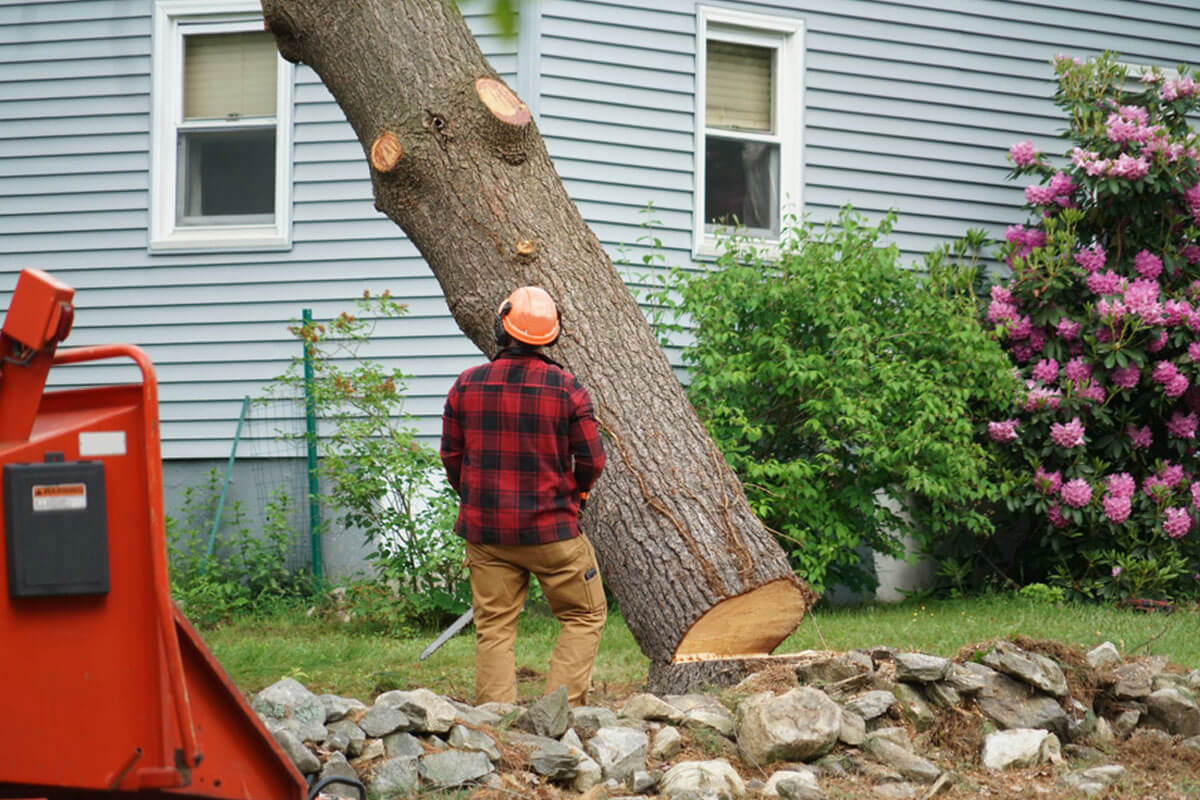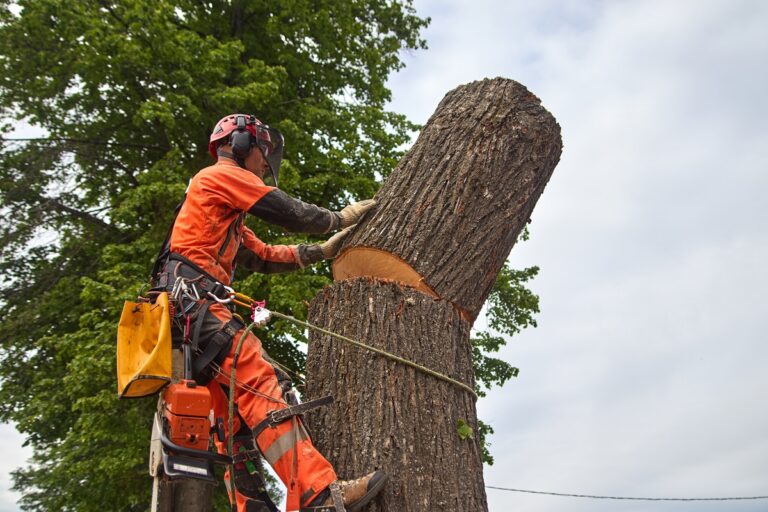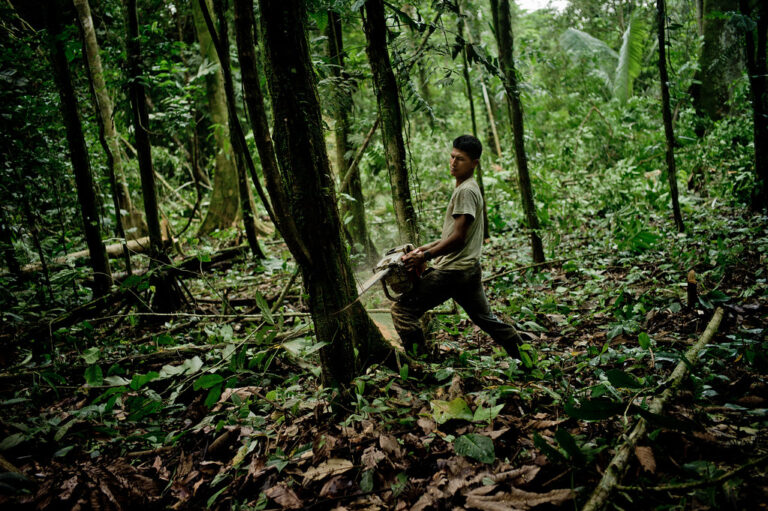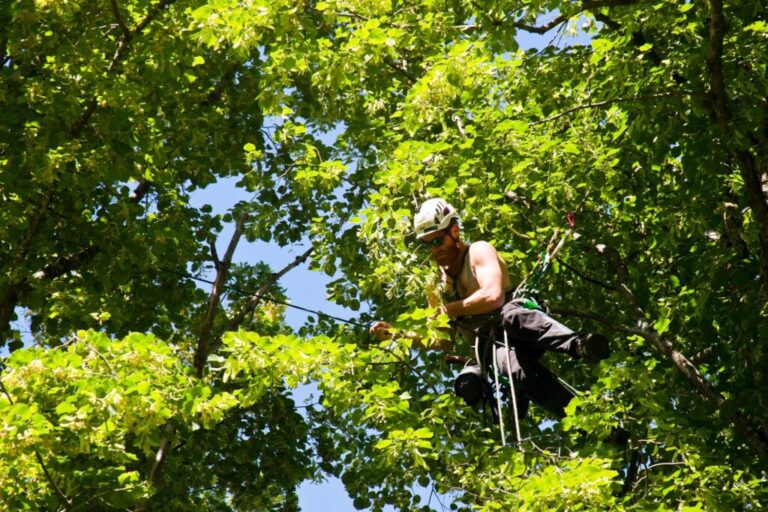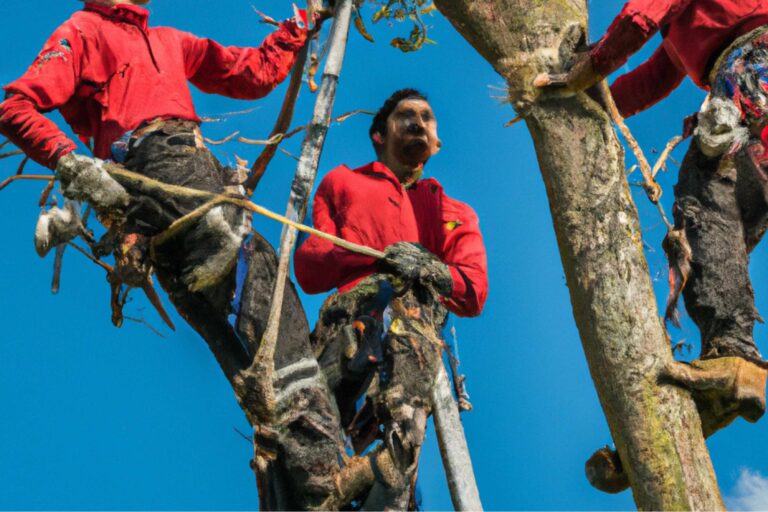Beyond Timber: Environmental Benefits of Responsible Tree Removal Practices
In today’s world, responsible environmental practices have become more important than ever. This includes the responsible removal of trees, a crucial aspect of proper land management. While the timber industry often takes center stage in discussions about tree removal, it is essential to consider the broader environmental benefits that responsible tree removal practices can bring.
Understanding Responsible Tree Removal
Before diving into the environmental benefits of responsible tree removal, it is crucial to have a clear understanding of what responsible tree lopping entails. Responsible tree removal refers to the practices and techniques used to minimize negative impacts on the surrounding ecosystem.
Responsible tree removal involves carefully planning and executing the extraction of trees with minimal disturbance to the environment. It takes into account factors such as tree health, ecological considerations, and the long-term sustainability of the forest ecosystem.
When it comes to responsible tree removal, it is not simply about cutting down trees. It is about taking a comprehensive approach that considers the broader ecosystem and its intricate connections. By understanding the importance of responsible practices, we can ensure the preservation of our forests for future generations.
See Also: A Guide to Timely and Effective Tree Maintenance
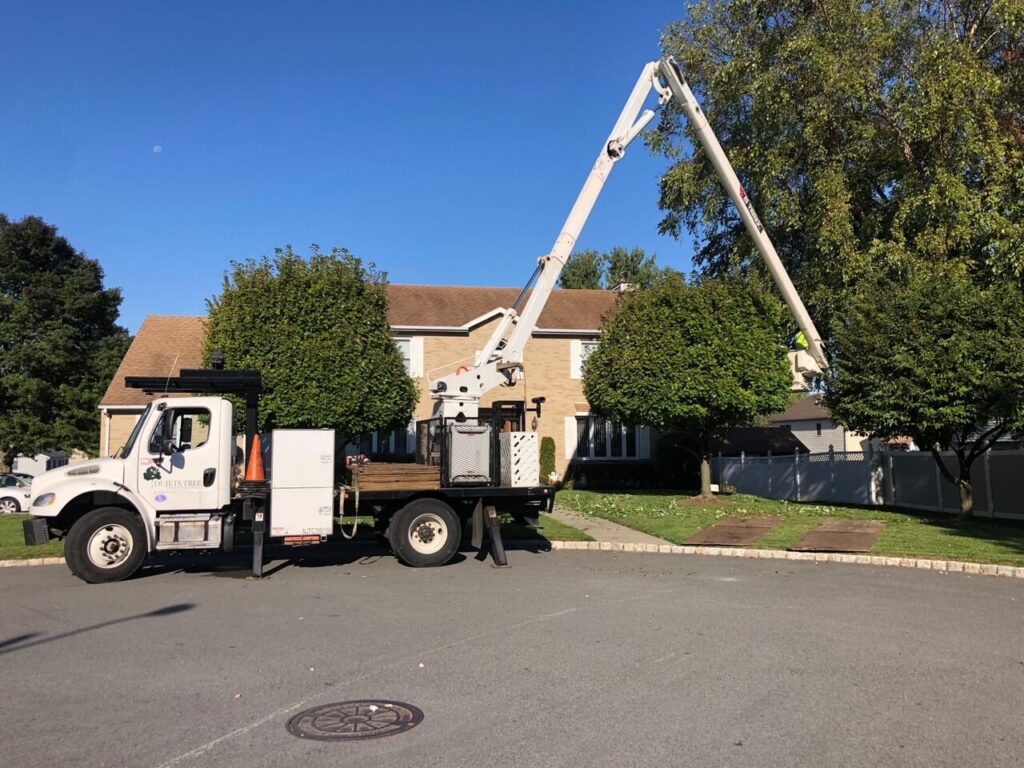
Defining Responsible Tree Removal
Responsible tree removal involves more than just the physical act of cutting down trees. It requires careful assessment and planning to determine which trees should be removed and which should be preserved. This assessment considers various factors, including the health and condition of the tree, its location within the ecosystem, and the potential impact on other plants and animals.
Additionally, responsible tree removal takes into account the use of appropriate equipment and techniques to minimize damage to the surrounding environment. This may involve using specialized machinery that can selectively remove trees without causing unnecessary harm to the surrounding vegetation or soil.
By defining responsible tree removal, we can establish guidelines and standards that promote sustainable forestry practices. These guidelines ensure that the extraction of trees is done in a manner that maintains the overall health and balance of the forest ecosystem.
The Importance of Responsible Practices
Responsible tree removal practices are essential for maintaining the overall health and sustainability of forest ecosystems. Trees play a vital role in the environment, providing numerous benefits such as oxygen production, carbon sequestration, and habitat for wildlife.
By carefully managing and monitoring tree removal, we can minimize negative impacts on the environment while still meeting the demand for timber products. Responsible practices ensure that trees are harvested in a way that allows for natural regeneration and the preservation of biodiversity.
Furthermore, responsible tree removal practices contribute to the prevention of soil erosion and the protection of water quality. By minimizing disturbance to the soil during tree extraction, we can reduce the risk of erosion and sedimentation in nearby water bodies.
Responsible practices also consider the social and economic aspects of tree removal. By engaging with local communities and stakeholders, we can ensure that the benefits of responsible tree removal are shared equitably and that the industry contributes to the well-being of the surrounding communities.
In conclusion, responsible tree removal is not just about cutting down trees, but rather a holistic approach that considers the long-term sustainability of forest ecosystems. By implementing responsible practices, we can strike a balance between meeting our needs for timber products and preserving the environment for future generations.
Environmental Impact of Irresponsible Tree Removal
While responsible tree removal practices offer numerous benefits, it is essential to highlight the potential environmental consequences of irresponsible tree removal.
Irresponsible tree removal can have far-reaching effects on the environment, with soil erosion and degradation being one of the most significant concerns. Trees play a vital role in stabilizing soil, their roots acting as anchors that prevent erosion. When trees are removed without proper consideration, the delicate balance of the soil is disrupted. This disruption can lead to increased erosion, as the exposed soil becomes more susceptible to the forces of wind and water. As a result, sediment runoff can occur, negatively impacting water quality and aquatic habitats. Sediment-laden water can smother aquatic plants, clog fish gills, and disrupt the delicate balance of underwater ecosystems.
Furthermore, the loss of trees through irresponsible removal practices can have severe consequences for biodiversity. Forests are home to countless species of plants and animals, each playing a unique role in the ecosystem. When trees are removed without considering the ecosystem as a whole, the intricate web of life that depends on these trees is disrupted. Many species rely on specific tree species for food, shelter, and nesting sites. Removing these trees can lead to a loss of habitat and food sources, ultimately resulting in a decline in biodiversity. The disappearance of certain tree species can have cascading effects on other organisms, leading to imbalances in predator-prey relationships and the overall health of the ecosystem.
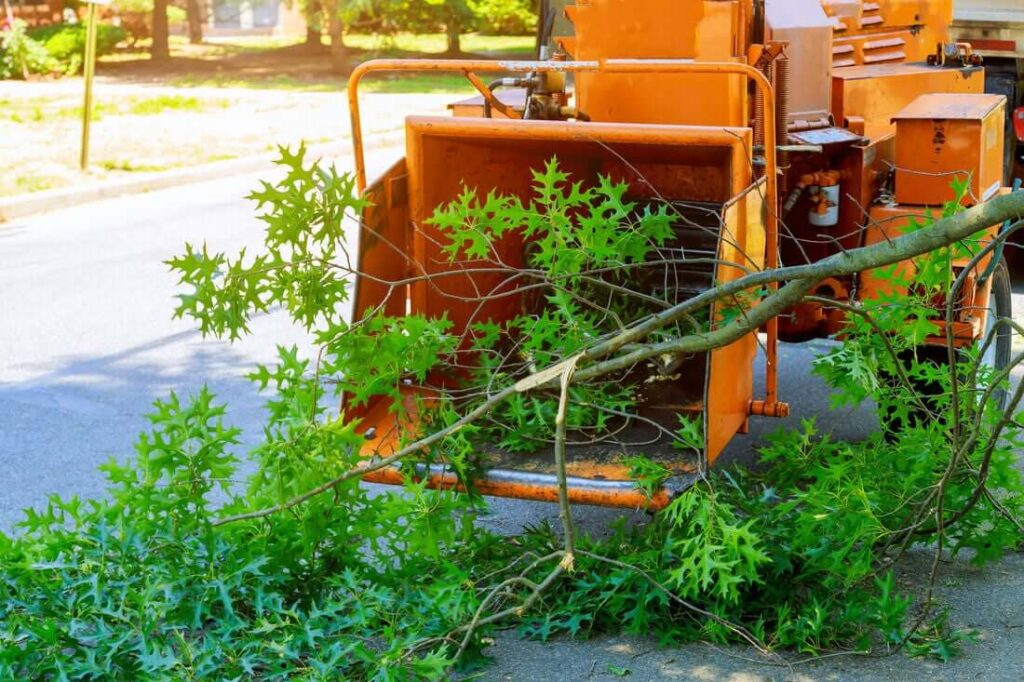
Moreover, irresponsible tree removal practices can also have indirect effects on the environment. Trees play a crucial role in mitigating climate change by absorbing carbon dioxide and releasing oxygen through the process of photosynthesis. When trees are removed, this natural carbon sink is diminished, leading to increased levels of greenhouse gases in the atmosphere. The loss of trees also reduces shade, which can contribute to higher temperatures in urban areas, known as the “heat island effect.” These elevated temperatures can have detrimental effects on human health and exacerbate the impacts of climate change.
In conclusion, the environmental impact of irresponsible tree removal extends beyond the immediate loss of trees. It can lead to soil erosion, degradation, loss of biodiversity, and contribute to climate change. It is crucial for individuals and communities to prioritize responsible tree removal practices to minimize these negative effects and ensure the long-term health and sustainability of our ecosystems.
Positive Effects of Responsible Tree Removal
While irresponsible tree removal can have negative consequences, responsible practices can bring about several positive effects on the environment.
Promoting Healthy Forest Growth
Through responsible tree removal, foresters can create space for new tree growth, promoting a healthier forest ecosystem. Removing sick or weak trees allows resources to be redirected to stronger, more vital trees, enhancing overall forest health.
When trees are carefully selected for removal, it opens up the canopy, allowing sunlight to reach the forest floor. This increased sunlight stimulates the growth of understory plants, which provide food and habitat for a variety of wildlife species. These plants also help prevent soil erosion and improve water quality by filtering runoff.
In addition to promoting the growth of new trees, responsible tree removal can also help manage the spread of invasive species. By removing trees that are susceptible to invasive pests or diseases, foresters can prevent the further spread of these harmful organisms, protecting the overall health of the forest.
Reducing the Risk of Wildfires
Proper tree removal practices can help reduce the risk of catastrophic wildfires. By selectively removing certain trees and managing forest density, the spread of wildfires can be controlled, protecting both human communities and wildlife populations.
When trees are too densely packed, they create a ladder of fuel that allows fires to spread rapidly from the forest floor to the tree canopy. By removing some trees, especially those that are dead or diseased, the density of the forest can be reduced, making it more difficult for fires to spread and limiting their intensity.
Responsible tree removal can also create firebreaks, which are areas cleared of vegetation that act as barriers to slow down or stop the spread of wildfires. These strategically placed firebreaks can help protect homes, infrastructure, and valuable natural resources.
In addition to reducing the risk of wildfires, responsible tree removal can also improve the overall health and resilience of the forest. By removing trees that are more susceptible to fire, such as those with high resin content, foresters can create a more fire-resistant forest ecosystem.
Furthermore, responsible tree removal practices often involve the use of sustainable logging techniques, such as selective cutting and replanting. These practices ensure that the forest remains productive and can continue to provide important ecosystem services, such as carbon sequestration and timber resources, for future generations.
The Role of Tree Removal in Sustainable Forestry
Tree removal plays a critical role in sustainable forestry, which focuses on finding a balance between timber production and conservation.
Sustainable forestry is a multifaceted approach that takes into account the ecological, economic, and social aspects of managing forests. It aims to ensure that the forests are not only a source of timber but also provide a range of ecosystem services, such as clean air and water, habitat for wildlife, and recreational opportunities for people.
When it comes to tree removal, sustainable forestry emphasizes responsible practices that minimize the negative impacts on the forest ecosystem. This involves careful planning and monitoring to ensure that the right trees are selected for removal, considering factors such as age, size, and species composition.
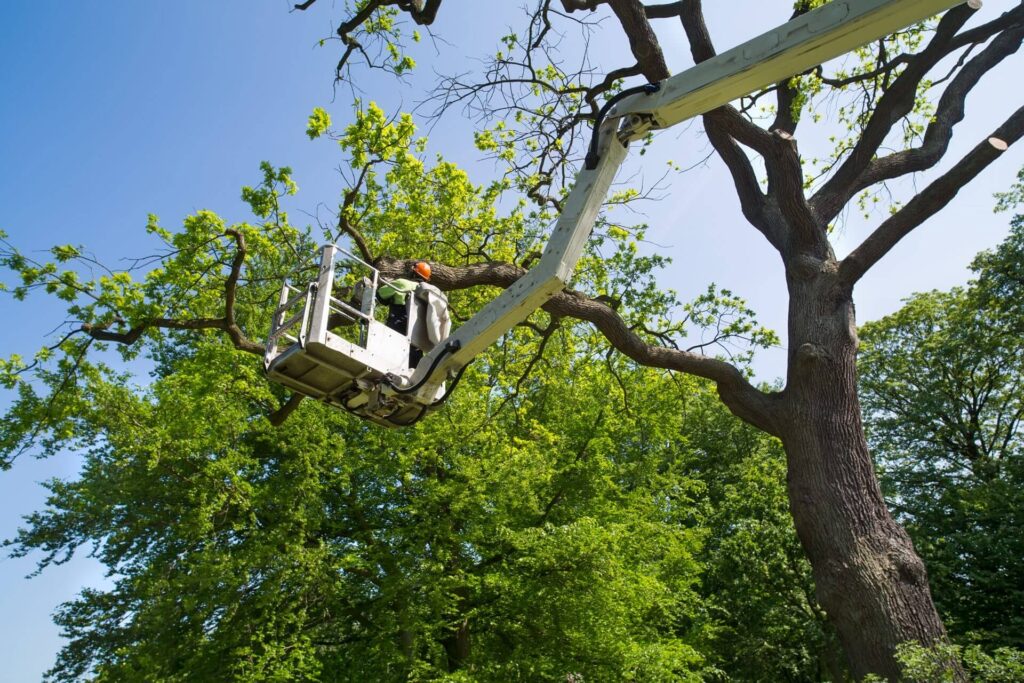
Balancing Timber Production and Conservation
Achieving sustainable forestry means understanding that responsible tree removal is necessary to meet our timber needs while preserving the long-term health of our forests. By carefully managing the number and type of trees removed, we can ensure a continuous supply of timber without depleting the forests.
One of the key principles of sustainable forestry is the concept of selective harvesting. Instead of clear-cutting large areas, selective harvesting focuses on removing individual trees or small groups of trees, mimicking natural disturbances and allowing for the regeneration of the forest.
By maintaining a diverse age structure and species composition, sustainable forestry promotes forest resilience and enhances biodiversity. It also helps to mitigate the risks of pests, diseases, and natural disasters, as forests with a variety of tree species and ages are more resistant to such threats.
The Future of Sustainable Forestry
The concept of sustainable forestry is not static but continues to evolve. As our understanding of ecosystems and their complexity deepens, responsible tree removal practices will become even more critical. By incorporating new research and technology, sustainable forestry can adapt to meet the needs of both the present and future generations.
Advancements in remote sensing and data analysis have enabled forest managers to make more informed decisions about tree removal. By using satellite imagery and aerial surveys, they can assess the health and productivity of forests, identify areas that require intervention, and plan tree removal activities accordingly.
Furthermore, sustainable forestry recognizes the importance of involving local communities and indigenous peoples in decision-making processes. Their traditional knowledge and practices can contribute to the sustainable management of forests, ensuring that the benefits of tree removal are shared equitably and that cultural values are respected.
As we look to the future, sustainable forestry holds the promise of not only meeting our timber needs but also safeguarding the health and vitality of our forests. By embracing responsible tree removal practices and embracing innovation, we can ensure that future generations will continue to benefit from the many services that forests provide.
Implementing Responsible Tree Removal Practices
To successfully implement responsible tree removal practices, guidelines must be followed, and the expertise of arborists and foresters must be utilized.
Guidelines for Responsible Tree Removal
Organizations and professionals in the industry have developed guidelines for responsible tree removal. These guidelines outline best practices that help minimize negative environmental impacts while still meeting timber demands. Following these guidelines ensures that tree removal is done in an ecologically sensitive manner.
The Role of Arborists and Foresters
Arborists and foresters play a crucial role in responsible tree removal. Their expertise allows them to assess the health of trees, identify non-native species that may harm the ecosystem, and strategically plan the removal process. By working with these professionals, responsible tree removal can be achieved while protecting the environment.
In conclusion, responsible tree removal practices go beyond timber production. They provide crucial environmental benefits, such as promoting healthy forest growth and reducing the risk of wildfires. Sustainable forestry relies on responsible tree removal to find a balance between timber production and conservation. By following guidelines and working with arborists and foresters, we can ensure that tree removal is done with the utmost care for the environment. Only through responsible practices can we truly understand the environmental benefits of responsible tree removal.

